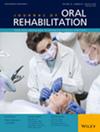The Role of Stress in Burning Mouth Syndrome Triggered by Dental Treatments: A Two-Step Hypothesis
Abstract
Objectives
Burning mouth syndrome (BMS) is a complex and debilitating orofacial pain disorder, defined as a persistent burning sensation in the oral mucosa without any identifiable causative lesion. Its prevalence increases with age, and women are disproportionately more affected. Onset typically occurs around menopause, sometimes associated with triggers such as stressful life events. Interestingly, some patients report dental treatments (DTs) as a precipitating event, yet evidence supporting the association between DTs and BMS onset remains scarce in the literature.
Patients and Methods
In this retrospective study based on electronic medical records, we identified BMS patients from the ABCD cohort of Chronic Orofacial Pain Department (COFPD) of the Pitié-Salpêtrière hospital in Paris, France, between January 2020 and December 2023. Patients fulfilling the International Classification of Orofacial Pain (ICOP) and International Classification of Headache Disorders (ICHD-3) criteria for BMS, who reported burning tongue pain following DTs and had a well-documented clinical history, were included.
Results
Among 78 identified BMS patients (70 women, 8 men), seven cases (all women, mean age 51.0 ± 3.8 years) of unilateral or bilateral burning tongue pain with a well-documented dental history were included. Detailed demographic, medical and pain characteristics are thoroughly reported. Pathophysiological hypotheses focusing on neurobiological mechanisms, the significant role of stress and neuronal sensitization are discussed.
Conclusion
The diagnosis of BMS should be considered cautiously in cases of unilateral symptoms to avoid misdiagnosis with other orofacial pain conditions, such as painful trigeminal neuropathy. A two-step hypothesis is proposed to explain the development of BMS, emphasising the interplay between stress and dental treatments in its onset.

 求助内容:
求助内容: 应助结果提醒方式:
应助结果提醒方式:


